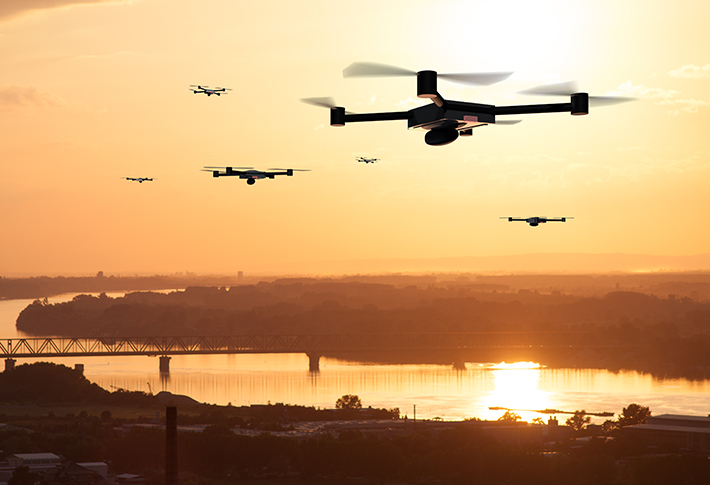
Podcast: Taking to the Skies: Drone Standards
The big news about drones recently isn’t that people are seeing them. It’s that people are being increasingly impacted by them on a daily basis.
In this episode of “Standards Impact,” Dave Walsh, editor-in-chief of Standardization News, talks with two experts in the UAS field about how drones are already changing the landscape of everyday life. Phil Kenul, chair of the committee on unmanned aircraft systems (F38), is a retired Rear Admiral with the National Oceanic and Atmospheric Administration. Mark Blanks, an F38 member, is head of global flight operations with Wing.
Dave: We've been talking about a lot of the technologies that are being developed today and some of the issues that we face and the standards that might address them, but there must be more futuristic developments on the way in the future. And so my question is, where do you see the UAS field in the next 20 or 30 years? What developments will we see? What policies and standards might be needed? I remember years ago people really couldn't envision beyond line of sight, you know, it was when that drone went around the corner, what happens now? Uh oh. And now, it's reality. They can do almost anything with the drone, you know, whether it's in the military or inspection fields. So what kinds of things will we see in the next 20 or 30 years that people think might be science fiction right now?
Phil Kenul: Getting away from the science fiction part, I think we're going to see widespread BV loss operations that is a must for the successful commercialization of the industry. It's going to take a lot of work and ASTM is leading a lot of that effort now with the standards for beyond visual line of sight. I also think we're going to need to have, and we will see integration into the national airspace instead of separate UTM airspace or urban air mobility airspace. I think we're going to have to see integration into the national airspace as drones become more integral part of airspace operations, they're going to need to coexist with man aircraft. We're going to need to see that happen and standards will evolve to ensure the safe coordinated flights between all those types of vehicles. And then urban air mobility, which folks are talking about now, the air taxi service gets you from your home to the airport, beat all the traffic.
I think in the next 20 to 30 years, you'll see that become a reality. I don't think it's going to happen in the next five years, but I think it's going take a little bit while for drones to eventually evolve into passenger carrying or air taxis. And then I think we're going to have to see harmonization of global regulations as well to see all this work. Well, one of the tough parts about developing standards is that each regulator may have a different approach to what they want to see. And I think it'd be best to have globally harmonized regulations so we can have globally harmonized standardization as well for these aircraft.
Mark Blanks: I don't even know where to start because if I, if I could predict the future 20 or 32 years from now, I would be investing quite heavily in that. There's no telling what the technology will bring. What I do see happening is some of what we've touched on more, this being the norm, the commoditization of drones where the services, then goods that they provide are just normal. Like, this is not novel. There's nobody looking up going, oh wow, there's a drone flying. It's a normal activity that brings great value to our lives. So I think it could be all kinds of different situations when you need goods on demand, you know, boom, it's there. That's just normal. It's taking for granted the improved production and efficiency of many different industries. We've talked a little bit about agriculture and energy and transportation, that's part of the norm.
It'll be like the concrete committee, we're talking about concrete, we're talking about drones, it's the very normal and common thing. I think Phil was, was spot on that as these aircraft and the technologies from a completely unoccupied aircraft grow into human carrying aircraft, that would be a different use case, a different risk profile. We'll see how that normalizes out over the future. But I definitely think it's possible to have fully automated systems flying people around and picking up people from search and rescue. You never know where it will go, but I think it will be the norm. I hope 30 years we're not having the same conversations we're having now. Let me put it that way.
Phil: Yeah, yeah. If you ask me five to 10 years, I couldn't tell you, but 10 to 20 years, I, I think we've got a shot at making this successful.
 SN Home
SN Home Archive
Archive Advertisers
Advertisers Masthead
Masthead RateCard
RateCard Subscribe
Subscribe Email Editor
Email Editor